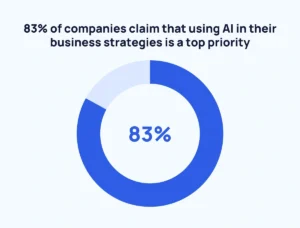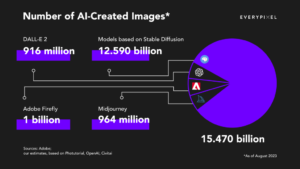
When to Use AI-Generated Content and When Not To
The rise of AI content generators has transformed the way businesses and individuals create content. These tools promise speed, cost-efficiency, and consistency, making them an attractive option for marketers, bloggers, and businesses alike. However, while AI can be a powerful ally, it’s not always the best choice.
This blog will explore scenarios where AI-generated content shines and situations where it might fall short, helping you make informed decisions for your content strategy.
When to Use AI-Generated Content
1. For Routine or Repetitive Content
AI tools excel at generating repetitive or formulaic content. Examples include:
- Product descriptions for e-commerce websites.
- Meta descriptions for SEO purposes.
- Basic reports or summaries based on structured data.
By using AI for such tasks, you can save time and focus your efforts on higher-priority projects.
2. When Speed Is a Priority
If you’re racing against deadlines, an AI content generator can be a lifesaver. AI tools can produce high-quality drafts within minutes, making them ideal for:
- Breaking news updates or trend-based blogs.
- Social media posts using an AI social media content generator.
- Quick responses to industry developments.
3. For Large-Scale Content Needs
Brands with extensive content demands can benefit from AI-generated content to maintain consistency and manage volume. For example:
- Agencies managing multiple clients’ content calendars.
- Websites requiring hundreds of pages of optimized SEO content, created using an AI SEO content generator.
4. For Multilingual Content
AI tools can assist in generating content in multiple languages, ensuring global outreach with minimal effort.
5. For Inspiration or Idea Generation
AI can kickstart the creative process by providing ideas, outlines, or drafts, which you can refine further.
When NOT to Use AI-Generated Content
1. For Highly Creative or Story-Driven Content
While AI is adept at creating structured content, it often lacks the depth and emotional intelligence required for:
- Storytelling or narrative-driven marketing campaigns.
- Branding content that demands a unique tone of voice.
- Poetry, prose, or creative writing.
2. When Authenticity is Crucial
Audiences can easily spot inauthenticity, especially in industries that thrive on personal connections, such as:
- Personal blogs or vlogs.
- Mission-critical marketing, such as political campaigns or sensitive issues.
- Niche industries where expert knowledge is paramount.
3. For Complex or Technical Topics
AI may struggle with nuanced or highly specialized topics. Inaccurate or oversimplified information can harm your credibility, especially in areas like:
- Legal or financial advice.
- Scientific research or medical content.
4. When Compliance and Originality Matter
AI-generated content must comply with plagiarism and originality standards. Tools like AI-generated content checkers can help verify this, but some platforms still penalize AI content. Use human oversight for compliance-sensitive content, such as:
- Academic papers.
- Content published on AI-restricted platforms.
5. For Emotional Engagement
Building genuine connections with your audience often requires human emotion, empathy, and intuition. AI struggles in areas like:
- Crafting heartfelt customer emails.
- Designing campaigns around sensitive causes or values.
How to Strike the Right Balance
While AI can be a time-saving and cost-effective tool, it works best when integrated with human expertise. Here’s how you can find the perfect balance:
1. Use AI for Assistance, Not Autonomy
Let AI handle drafts, outlines, and repetitive tasks, but always review, edit, and refine the content to match your brand’s voice and purpose.
2. Test Before You Publish
Run your content through an AI-generated content checker to ensure originality and quality.
3. Understand Your Audience
Evaluate whether your target audience values human connection and creativity over efficiency and volume. Look at it from a content personalization perspective to give you more clarity of who your audience is.
4. Combine AI with Expert Input
Blend AI efficiency with human insight to deliver engaging, accurate, and emotionally resonant content.
Building a Marketing Strategy Around AI Content Generation
Here’s a step-by-step guide to effectively integrate AI content into your marketing plan:
Step 1: Define Your Goals
Identify what you aim to achieve: brand awareness, lead generation, increased engagement, or improved SEO rankings.
Step 2: Select the Right Tools
Choose tools that align with your objectives:
- Use an AI content generator for blog posts and articles.
- Opt for an AI social media content generator to streamline your posting schedule.
- Employ an AI SEO content generator to create keyword-rich web pages.
Step 3: Plan Your Content Calendar
Map out your content needs weekly or monthly. Assign topics to AI tools and allocate time for manual review and editing. Read more about AI in the digital marketing world
Step 4: Test and Refine
Run your AI-created content through an AI-generated content checker to ensure quality and originality. Analyze performance metrics and refine your strategy accordingly.
Step 5: Blend AI with Human Expertise
While AI can handle repetitive tasks, ensure human oversight for creative storytelling, brand voice consistency, and audience connection.
Top Tools for AI Content Creation
Here’s a list of popular tools you can leverage:
- Jasper AI: A versatile AI content generator ideal for blog posts, ads, and email campaigns.
- GrammarlyGO: Helps polish AI-generated content for grammar and tone.
- SurferSEO: Combines SEO analysis with content creation for ranking optimization.
- Writesonic: An intuitive AI SEO content generator for targeted keywords and engaging copy.
- Hootsuite Insights with AI: An excellent AI social media content generator for planning and automating posts.
- Originality.ai: A reliable AI-generated content checker to ensure originality and authenticity.
Final Thoughts
The question of when to use AI content generators comes down to your goals, audience, and the type of content you need. AI shines in speed, scalability, and routine tasks but may falter in creativity, emotional depth, and authenticity.
When used strategically, AI can be a powerful ally in your content creation process. But remember, the magic often lies in the human touch that transforms AI’s raw output into something truly impactful.
Are you ready to leverage AI for your content needs? Or do you prefer sticking to human creativity? The choice is yours—but with the right balance, the possibilities are endless!





